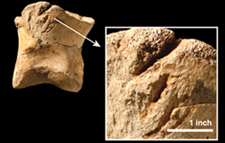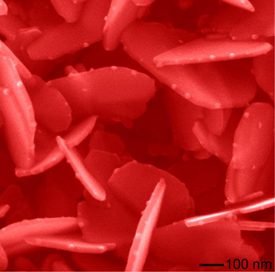What Did T. Rex Eat? Each Other.

T. rex was the only big carnivore in western North America 65 million years ago that was capable of making such large gouges. Image credit: Nicholas Longrich
It turns out that the undisputed king of the dinosaurs, Tyrannosaurus rex, didn’t just eat other dinosaurs but also each other. Paleontologists from the United States and Canada have found bite marks on the giants’ bones that were made by other T. rex, according to a new study published online Oct. 15 in the journal PLoS ONE.
While searching through dinosaur fossil collections for another study on dinosaur bones with mammal tooth marks, Yale researcher Nick Longrich discovered a bone with especially large gouges in them. Given the age and location of the fossil, the marks had to be made by T. rex, Longrich said. “They’re the kind of marks that any big carnivore could have made, but T. rex was the only big carnivore in western North America 65 million years ago.” (more…)



